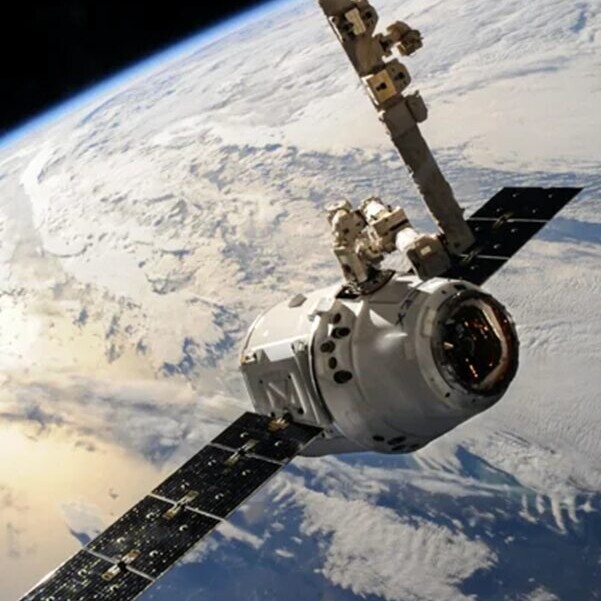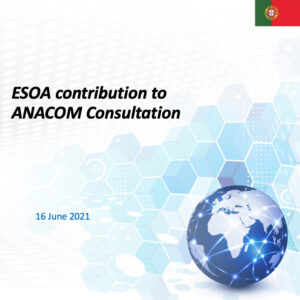Ensuring optimal use of the upper 6Ghz band
The Global Satellite Operators Association “GSOA” is the leading global platform for collaboration between satellite operators. As the world’s only CEO-driven satellite association, GSOA leads the sector’s response to global challenges and opportunities. It offers a unified voice for the world’s largest operators, important regional operators and other companies that engage in satellite-related activities.
GSOA welcomes the establishment of an EU common position ahead of the World Radiocommunication Conference 2023 (WRC-23).[1] This conference, which will be held in Dubai from 20 November to 15 December 2023, represents a crucial point of decision for the digital future of Europe, as the Member States of the International Telecommunication Union (ITU) will review, and if necessary revise, the Radio Regulations, the international treaty governing the use of the radio spectrum.
WRC-23 will address a range of issues related to space and terrestrial communication systems, used for scientific, commercial and government purposes. One of the issues to be addressed relates to the planned use of the band 6.425-7.125 GHz (the “Upper 6 GHz Band”). In particular, as part of agenda item 1.2, WRC-23 will consider whether to identify this band for International Mobile Telecommunications (IMT), which is the ITU terminology used for 3G/4G/5G mobile systems. Identification of this band for IMT would be a signal to mobile operators and manufacturers that this band will be available for new 5G or 6G mobile systems. However, this band is allocated to several other services, including in the most part to the fixed-satellite service (FSS). MSS systems also use this band for their feederlinks (specific use of the FSS allocations).
There are existing operational FSS and MSS networks in the Upper 6 GHz Band with coverage of Europe and beyond, which require protection from interference from terrestrial services. However, IMT systems and FSS and MSS systems are not able to share the band.
Part of the Upper 6 GHz Band is used for the feeder uplinks (i.e. from Earth to space) by MSS systems serving Europe and other regions. This includes the Inmarsat network, which provides critical communications to European citizens, businesses, and government users. This system is, for example, vital to maritime operations in Europe and the rest of the world. This includes provision of satellite communications for the GMDSS[2], which could be unable to operate if interference was to occur to the C-band satellite uplinks, placing lives at risk.
In addition to maritime users, MSS services are extensively used by European and non-European aircraft, for aircraft operations and for passenger communications. The aviation industry also relies on MSS satellite connectivity for the safe operation of aircraft. Europe is investing in enhancing the use of MSS operations throughout the EU through the Iris programme, to improve the efficiency of the management of airspace, and to help Europe achieve its “Green Deal” goals[3]. This huge investment and the even greater benefits to the aviation industry and to European citizens that result from Iris are also placed at risk if interference was to occur to the C-band satellite uplinks in the upper 6 GHz band.
Furthermore, the band is also used to support the uplink of signals associated to the satellite-based navigation augmentation services (SBAS) in Region 1, such as EGNOS and the Nigerian Satellite Augmentation System, which is used, for example, for aircraft precision landing systems. These navigation services use the C-band uplink range, with hemispherical and global coverages.
The upper 6 GHz band is intensively used for and is essential to telecommand and control signalling for station keeping and safely manoeuvring spacecraft to ensure compliance with international treaty obligations. With the increasing concern in Europe regarding the proliferation of space debris, interference from terrestrial systems that could compromise station keeping and safely manoeuvring spacecraft should be at the forefront of Europe’s policies.
Also, the use of part of the Upper 6 GHz Band (6.725-7.025 GHz) by GSO FSS (Earth-to-space) networks is subject to the provisions of Appendix 30B for the Radio Regulations, whose objective is to guarantee in practice, for all countries, equitable access to the geostationary-satellite orbit, which is important for developing countries. While the Appendix 30B allotments are not extensively used in Europe, they are of high importance for some other regions, in particular developing countries, and should not be threatened by the decisions of European regulators.
The Upper 6 GHz Band is also used in the downlink direction (i.e. from space to Earth), for feeder links from non-geostationary mobile satellite systems to receiving earth stations which are currently operating in Europe. More earth stations are planned.
The Upper 6 GHz Band is also used by satellite passive sensors, which observe global soil moisture, global sea surface temperature, temperature of sea ice and sea surface wind through cloud, in combination with other channels. The data collected by satellites operating in this band is used for weather forecasting and climate monitoring, including in the European Copernicus programme.
Considering the above factors, it can be seen that the use of the band 6.425-7.025 GHz for satellite uplinks, and the band 6.700-7.075 GHz for satellite downlinks, provides massive socio-economic benefits to Europe and the wider world. The continued use of this band for satellite services should be considered as a baseline to the European position for this agenda item.
The proponents of IMT use in the Upper 6 GHz Band claim that IMT systems can co-exist with the current FSS and MSS uses. The major technical issue relates to potential interference from IMT systems into satellite space receivers. A geostationary satellite can “see” around one third of the earth surface and hence would receive interference from potentially millions of mobile base stations and terminals. Experience in some other frequency bands used by satellite uplinks, such as the 2.5 GHz band, has shown that IMT systems can cause interference to satellites that effectively prevent all satellite operations[5].
For the Upper 6 GHz Band, technical studies have been conducted in the framework of the ITU-R preparatory process for WRC-23 and there is a range of results, with some studies showing interference below the FSS protection criterion and others showing interference well above the FSS protection criterion. The studies have used common assumptions for many of the parameters, but different results occur due to divergence in the assumptions for some parameters (e.g. the amount of ground clutter). Furthermore, the modelling of interference for these studies is limited to complex computer simulations, which cannot practically be validated by other stakeholders.
The baseline assumptions used in almost all studies assume only very limited deployment of IMT in the Upper 6 GHz Band. Those assumptions assume IMT deployment in this band only in a limited part of urban and suburban areas. In aggregate, these assumptions are equivalent to coverage by IMT systems of only 0.15% of land, on average. If the Upper 6 GHz Band was to be used by terrestrial IMT systems, the density of deployment in Europe would need to remain close to this figure, i.e., IMT deployment covering no more than approximately 0.15% of the land of Europe. This constraint would severely limit the benefits that would result to European citizens from the use of the upper 6 GHz band for IMT. There is also no clear benefit that would come from IMT use of the 6 GHz that cannot be achieved by use of the other bands already identified for IMT.
GSOA is of the view that there could be a better scope for shared use of the upper 6 GHz band by satellite services sharing with WAS/RLAN systems, which includes Wi-Fi, if deployed with adequate power limitations. Several countries, including the United States, Brazil and Korea have already taken decisions to authorise the use of the Upper 6 GHz band for such systems. Europe has already adopted regulations for WAS/RLAN in the adjacent band 5.945-6.425 GHz with low and very low power and deployment limits to provide compatibility with the FSS, and the CEPT is currently conducting studies on the possible use of WAS/RLAN systems in the Upper 6 GHz Band. Similar regulations to those in the existing adjacent band (i.e. low and very low power limits) would be required in the Upper 6 GHz Band to enable WAS/RLAN operation while ensuring protection of satellite services. By introducing WAS/RLAN on a shared basis with the FSS in the upper 6 GHz band, Europe could achieve an effective and efficient long-term use of the band.
The EU has a choice to make between two alternatives:
- If, as a result of the WRC-23 proceedings, the Upper 6 GHz Band was identified for IMT, this band will, over time, likely become unusable for satellite systems (FSS, MSS and passive sensors) and Europe will lose the benefits outlined above. The band will also likely be unusable by other systems, such as Wi-Fi and microwave fixed links, which are also unable to share with IMT systems.
- If, as a result of the WRC-23 proceedings, the so-called “no change” option was adopted, Europe would retain the ability to deploy and operate important satellite systems and would retain the flexibility to deploy new terrestrial wireless systems on a shared basis.
To enable EU citizens and businesses to truly benefit from a range of radiocommunication services, GSOA strongly encourages Europe to adopt the No Change position for the Upper 6 GHz band, for WRC-23.
[1] For more information about the World Radiocommunication Conferences 2023 (WRC-23), please consult the website.
[2] GMDSS is the Global Maritime Distress and Safety System, defined and managed by the International Maritime Organization.
[3] Iris is a component of the Single European Sky Air Traffic Management Research (SESAR) programme, under the leadership of the European Commission. See www.sesarju.eu
[4] Information on interference form IMT base stations to an MSS system operating in the band 2 655-2 690 MHz can be found in the ITU-R WP4C document Annex 2 to Document 4C/283-E (https://www.itu.int/md/R19-WP4C-C-0283/en)
Natalia Vicente
Director of Public Affairs & Communications
nvicente@gsoasatellite.com
+32 2 669 4274






